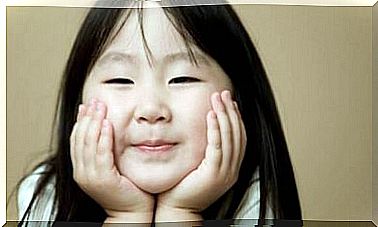Psychological Treatment For Autism

Currently, there are several treatments aimed at both children and adults diagnosed with an autism spectrum disorder. Some of them have a solid scientific foundation and offer results; others, less so, or only work with people who fit a very specific profile. On the other hand, what we do know is that effective psychological treatment for autism is evidence-based as well as being integrative and holistic.
Autism was formally recognized in the early 1940s by Austrian psychiatrist Leo Kanner. Kanner was already studying characteristics that usually occur in autism, such as isolation, language problems, limited communication or an obsession with the invariance of the environment.
The exact definition of autism is still controversial. A few years ago, the term “Autism Spectrum Disorders (ASD)” was incorporated to classify a broader group of disorders that share clinical features that define “classic” autism.
Autism affects 10 to 15 people in 10,000. When you include the milder subtypes and Asperger syndrome in this statistic, the prevalence increases to 57 per 10,000 people.
As for gender, 4 out of 5 people affected are male, although women tend to have greater intellectual disability. The latter affects 75% of people diagnosed with autism; in addition, 50% are mute or have a language impairment.

Psychological Treatments for Autism
From the plurality of therapeutic options, there is an increasingly consensual fact: there is no single valid intervention program for all people with autism, just as there is no single valid therapeutic approach for the same individual at different moments of their development .
What is clear is that behavioral interventions are the psychological treatment of choice for autism. All of them are based on applied behavior analysis to specify that person’s needs and then modify the relevant behaviors.
The theoretical premises of behavioral treatment for autism
- The learning principles are universal and apply to people with and without autism equally.
- It is not necessary to know the etiology of autism to apply behavioral techniques (Lovaas, 1993). This fact contrasts with theories based on supposed explanatory mechanisms for autism.
- Autism is conceived as a syndrome with deficiencies and excesses of certain behaviors. Although there is a neurological basis, behaviors are susceptible to change thanks to interaction with a programmed environment.
The general objectives of the intervention are:
- Develop communication skills that allow them to better understand other people, their relationships and their actions.
- Decrease behaviors that interfere or hinder emotional stability and independence.
In recent years, different programs have emerged with more empirical evidence. Some of them are: Applied Behavior Analysis (Loovas, 1987; Simth et al., 2000), Naturalistic Behavior Intervention (Koegel et al., 1998) and the Pragmatic Evolutionary Model (Prinzant and Wetherby, 1998).
Psychological Treatment for Autism: Applied Behavior Analysis (Lovaas)
Applied Behavior Analysis (ABA ) uses scientific knowledge about learning. She does this to develop teaching procedures for the acquisition of socially relevant behaviors.
Most people think that global behavioral interventions attempt to instruct the individual through a set of techniques over a period of time. However, what they actually do is promote specific skills through one or a few different techniques. Both types of interventions are considered equally effective.
- Analysis. Progress is assessed from the start of recorded interventions and measured on their progress.
- Behavior. Based on scientific principles of behavior.
- Applied. Principles applied to observed behaviors.
On the other hand, the most common elements in global interventions are:
- The learning environment is controlled and structured.
- Treatment aimed at all skill domains and individualized according to deficits and excesses.
- It uses applied behavior analysis procedures.
- One or more therapists carry out the treatment.
- Treatment lasts from 34 to 40 hours a week.
- Therapists select short-term goals following normal development.
- Therapists define a plan for generalization and maintenance.
- The patient needs to learn some skills first to learn others later.
- Learning the language is the main objective.
- Learning by trial or error causes an increase in negativity, behavioral changes and demotivation. Therefore, the treatment uses error-free learning procedures.
Results of global interventions
Different studies have concluded that Applied Behavior Analysis as a treatment for autism shows results in the following areas:
- Accelerated development rate, with an increase in IQ of up to 20 points. Allows patients to reach normal levels.
- Improves adaptive behavior to a normal level.
- It can eliminate autistic traits, such as self-stimulated and harmful behaviors, stereotypes, etc.
- Language acquisition is possible for a large majority of children, usually around the age of five.
- Improved behavior and social skills.
- Students can attend regular schools.
- The results are maintained in years of follow-up.
Variables of global interventions that affect their effectiveness
Studies on behavioral treatments show that certain variables can influence the effectiveness of the treatment:
- The earlier the intervention starts (preferably before the age of four), the greater the chances of integration into a regular school.
- The more intense, the more effective. Although there may be different needs depending on the child.
- If there is an improvement in the first year, there will also be in the second. Advances may continue at the same pace for up to two years later.
- Behavioral therapy is superior to all other treatments.
- The quality of training of instructors, teacher supervisors and parents does not seem to interfere with the results. In some studies, professionals who were not necessarily autism specialists participated.
- Parental collaboration favors better maintenance and generalization of results.
- Base the treatment on knowledge of the psychological characteristics of people with autistic disorder.
Psychological treatment for autism: specific interventions
Many studies have used behavioral interventions to achieve success from the most elementary learning conditions to more complex behaviors such as language.
On the other hand, one of the most important discoveries in the context of behavioral intervention in autism is: how much less disruptive behaviors (such as self-stimulation), the greater the possibility of learning.
In this sense, the researchers reached two conclusions:
- When a child with autism is prohibited from answering an item, their answers are distributed among the others.
- As disruptive behaviors decrease, the likelihood of discriminative learning increases.
Research seeks to clarify how disruptive behaviors are maintained: by positive reinforcement, negative reinforcement or by the absence of another stimulus.
The main conclusion reached by the studies is that, to reduce disruptive behaviors, it is not efficient to directly focus on stopping or reducing them. One of the most effective strategies for eliminating these behaviors is differential reinforcement of other behaviors.
Psychological Treatment for Autism: Naturalistic Behavioral Intervention (Koegel et al., 1998)
Several current studies based on behavioral interventions use a more “naturalistic” approach to development. This marks a big difference between more traditional interventions based on ABA ( Applied Behavior Analysis ).
For example, the most recent interventions developed for preschool students consist of placing them in natural and socially interactive environments.
These interventions, based on empirically proven methods, derive from the principles of behavioral learning and developmental science.
Naturalistic teaching emerged in response to the difficulties of more traditional methods of intervention based on discrete attempts to generalize learning.
All approaches ( Incidental Teaching; Pivotal Response Training; Milieu Teaching; Natural Language Teaching , etc.) were developed with the intention of achieving a more naturalistic method. In this way, they seek to improve the language and communication development of autistic children.
These interventions are based, in part, on the interactive principles and processes that emerge from development models, the ABA, and the importance of parent-child interaction.

Psychological Treatment for Autism: The Pragmatic Evolutionary Model (Prinzant and Wetherby, 1998)
This model is characterized by an eminently pragmatic and social approach to development. Emphasizes the need to focus on pre-verbal and verbal language as well as functional communication skills.
Furthermore, it works to reduce the difficulties associated with imitation, in addition to the peculiarities of sensory processing.
Likewise, it highlights the socio-pragmatic natural context, reiterates the participation of the family and recommends the inclusion of work in pairs.
The construction of intentionality, taking turns, shared attention and communicative initiation skills are responsible for all of this. Children can expand their repertoire of functions with different instruments in a natural context.









